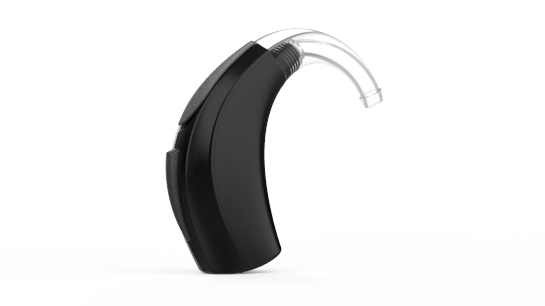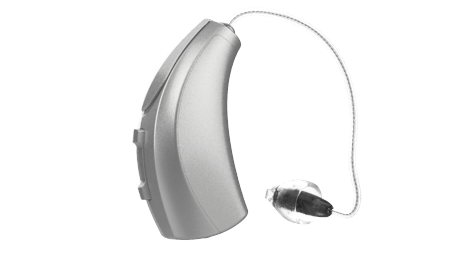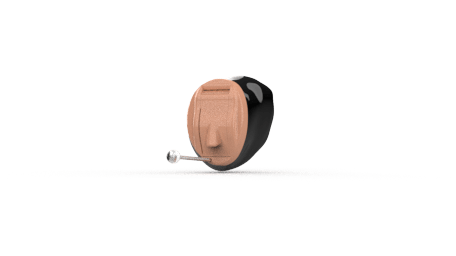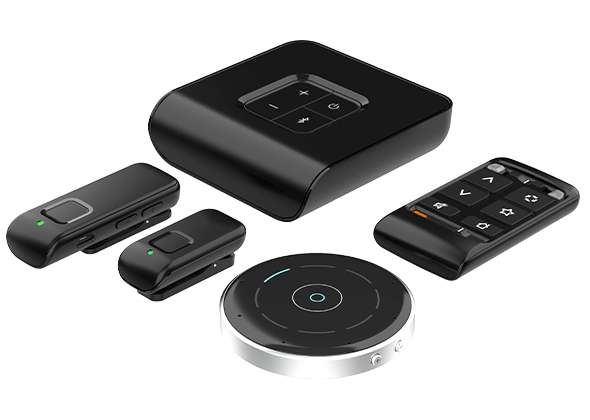Hearing Aid Overview
Hearing aids have come a long way from the bulky, whistling units of the last century. All hearing aids now employ digital signal processing (DSP) to accomplish some very sophisticated audio filtering. Manufacturers typically offer 3 processing levels. Depending on lifestyle, some people may benefit from the premium processing suite, while others may be fine with a basic level. The professionals at Audiology Associates will help you navigate your way to the right hearing aids for your needs and lifestyle, but it doesn’t hurt to come to your hearing test with some knowledge about the different types of hearing aids out there and what they can do for you!
Sizes and Styles
Hearing aids come in a variety of sizes and styles. In general, larger hearing aids will have more features and longer battery life. Larger hearing aids also have the real estate to accommodate rechargeable batteries. Here is an overview of some of the most common hearing aid styles.


Behind-the-Ear (BTE) and Receiver-in-Canal (RIC)
BTE and RIC hearing aids both have a separate body and earpiece. The body sits behind the ear, while the ear piece sits at the opening of the ear canal. The difference between BTE and RIC hearing aids is that BTEs have the speaker inside the body of the hearing aid, and emit sound through a surgical PVC tube into the ear. RIC hearing aids have a speaker in the earpiece, which is powered by a thin wire that runs from the body of the hearing aid to the receiver.
BTE and RIC hearing aids tend to have the largest available feature sets, as they can both accommodate the greatest amount of equipment. They also tend to be the only styles for which rechargeability is an option. Rechargeability is increasingly common, and tends to be the best option for most people.
BTE hearing aids are appropriate for all degrees of hearing loss, which most RIC models are suitable for those with mild to moderate hearing loss.

In-the-Ear (ITE)
ITE hearing aids rest in the ear canal, with the bulk of the hearing aid sitting just outside the canal. They tend to have the largest feature sets and longest battery life of all styles that do not place the bulk of the hearing aid behind the ear. The Starkey and ReSound companies even make an ITE hearing aid with a rechargeable option! Most ITEs are suitable for those with mild to moderate hearing loss.

In-the-Canal (ITC)
ITCs sit entirely in the ear canal, with only the outside end of the hearing aid visible. They still have plenty of features, but tend to have a shorter battery life and are not available with a rechargeable option. ITCs are appropriate for those with mild to moderate hearing loss.

Invisible-in-the-Canal (IIC)
As the name implies, IICs are not visible when worn. Some models sit so deep in the ear canal that you can actually wear a pair of earbuds at the same time as you have your hearing aids in! Because they are so small, they tend to have a shorter battery life, and features may be limited compared to larger hearing aids.
Hearing Aid Features

Rechargeability

Bluetooth
Bluetooth is a wireless protocol used by numerous manufacturers throughout a number of industries. Bluetooth connectivity allows you to keep your hearing aids paired to your smartphone. Using your phone, you can control the volume and programming of your hearing aids, and in some cases even take a hearing test and update your programming.
Bluetooth allows you to wirelessly stream the audio from phone calls, video calls, and other media directly to your hearing aids. It is also increasingly common for hearing aids to allow pairing with more than one device at a time. You can keep your hearing aids permanently paired to your smartphone, and still connect them to a laptop, tablet, or TV adapter when you want to listen to content from these other devices.

